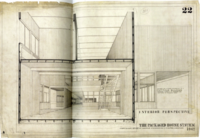Modularisation: A modern process for project management
Nearly all projects are characterized by a certain degree of complexity and uncertainty. However, every project is unique and its success depends on various product development and management processes vital for the current rapidly changing business environment. Within this context, it has become increasingly important for companies with vast product portfolio to be able to manage the project complexity in order to increase efficiency and ensure competitive advantage in the long run.
Modularization is a process that breaks down complex systems into small and solvable parts. By dividing the product structure into modules, companies seek to optimize the way they function and operate in terms of transforming their products in a more flexible and accurate way. Modularization has gained momentum over the years as it helps projects achieve significant benefits by removing underperforming processes, products and parts. Since it is still a relatively new field outside the automotive and aircraft industry where it initially evolved, there is a growing interest in the development process of the modular patterns.
The purpose of this article is to explore the potential of modularization as a proactive strategy and product development tool for managing effectively the complexity derived from project and portfolio management processes. The article comes along with a detailed analysis on product modularization.
Keywords: complexity management; product modularity; modularization;
Contents |
History
This section refers to the evolution of modularization in order to get an understanding of the origins of the concept. The term module comes originally from the Latin term modulus and it is the diminutive of the term modus which means measure. Several meanings of the term module exist but the most important range from “a standard or unit for measuring” to a separable component that is “interchangeable” with others for assembly into units of different size, complexity or function.
In architecture, modules were associated with the Bauhaus philosophy leading to the configuration of the so –called “building blocks” (Baukasten) being individual functional units in buildings, easy to be assembled. Purpose was that modules were used as an arbitrary unit adopted to regulate the dimensions and proportions of parts of the building system for better design and coordination. One extraordinary project example of industrialized building blocks was the industrialized modular housing “The Packaged House” designed by well-known architects Konrad Wachsmann and Walter Gropius. It described a modular system comprising of a coordinated set of elements that allowed an infinite number of interactions for the final configuration and satisfied the housing needs for functionality, quality, uniformity and precision. However, it was not realized in practice, but the designs reflect the conceptualization of modularity.
Process Modularisation
Product Modularisation
Complex engineering systems
Most complex systems share a common quality. They have nodes and links. Nodes represent the tangible objects like people and links represent the connection between the nodes. It is the combination of links and nodes that produces a full system model and makes visible the thinking design process about how people think something works. The interesting about the system models is how they reveal our different point of views. Organisations, people and individuals make intuitevily use of system models comprising of nodes and links in order to break down complex things into simple things and then bring them back together again and make a whole.
Tools
The main modular approaches
Functional approach
Component approach
Modular Function Deployment (MFD)
Modular Function Deployment tool is used as a step by step process of how to investigate which part of the architecture should be modularised and which should be standardised.
